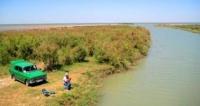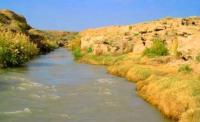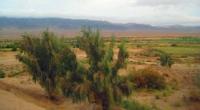You are here
Hungry steppe.





Flower Travel in Uzbekistan.
“In nature we never see anything isolated, but everything in connection with something else which is before it, beside it, under it and over I”
Johann Wolfgang von Goethe.
Central Asia, Uzbekistan and Samarkand tours.
Hungry steppe is located at the bottom of spurs of the western part of the Turkestan Range and the ridge Nuratau. It stretches for the North and the northeast to the valley of the Syr Darya, and in the northwest merges with the Kyzyl-Kum Desert.
It is the extensive plain more than 1 million hectares. Decreases in a surface (Dzhetysay, Sardobinsky hollows, etc.) are available in places among equal space. From slopes of the Turkestan Range towards the plain numerous, small rivers not abounding in water which water in a foothill zone is spent by a part for irrigation flow down, evaporates or filters deeply into soil. In sandy deposits of the accumulative plain water collects and moves in the horizontal direction towards the Syr Darya and the lake Tuzkan.
However owing to features of a structure of the plain this underground drain is slowed down: ground waters form the stagnant pool. In the south at the foot of mountains they almost fresh, in the central part are more mineralized, and in a northern part with especially slowed down current are strongly salted.
Soils of the desert before its irrigation generally were not salted. Hungry steppe in the main part - the typical ephemerae desert in which during spring rains develops a dense it is expressed very accurately. At a low rainfall, dryness of air and high temperatures there is a strong evaporation of moisture and drying of the soil.
At the end of May cultivation of a cotton and other cultural plants demands a large amount of water. Development and irrigation of Hungry steppe has a long story. The first attempts of its flood were made in the middle of last century with the purpose to provide with water the military and trade path passing here.
The canal built at the end of the last century irrigated the small site of the desert. Further the irrigated areas in a northeast part of the desert were gradually expanded. Irrigation from the very beginning began to lead to raising of ground waters, bogging and salinization of fields.
There was a so-called nomadic agriculture. The areas of saline soils and boggy lands big quickly. In the years of civil war irrigation canals were started, the irrigated area was reduced.
Authority:
N. A. Gvozdetsky, N. I. Mikhaylov. Physical geography of the USSR. An Asian part, the Edition third corrected and added Moscow "Thought" of 1978







